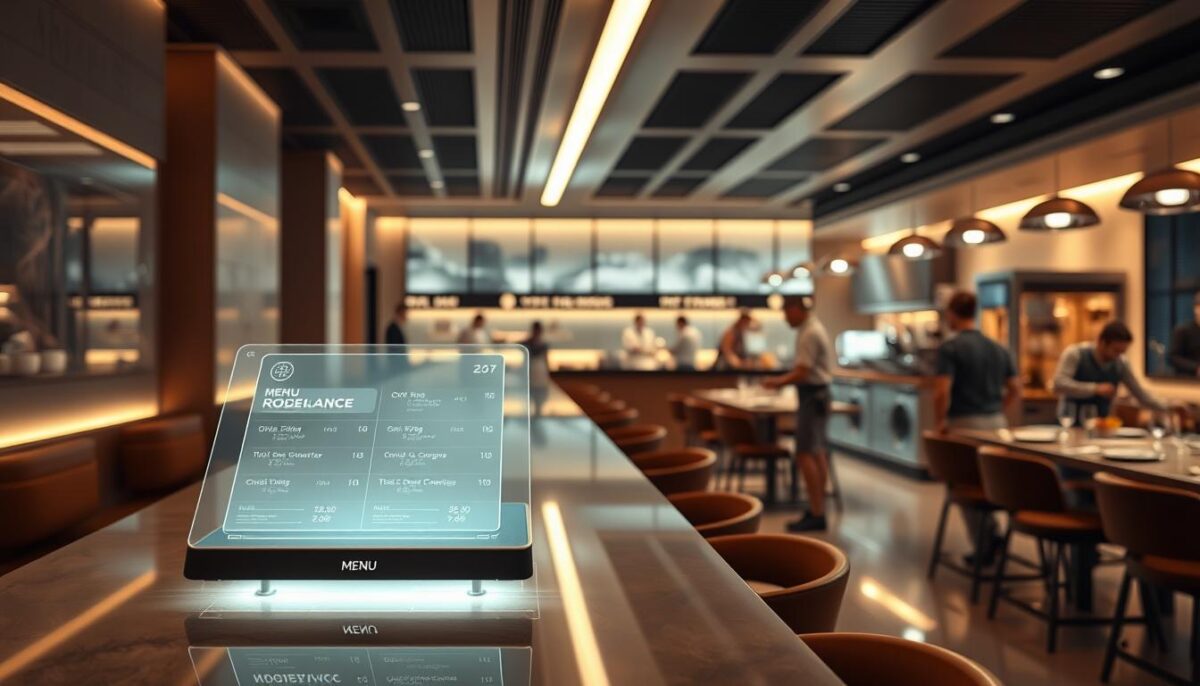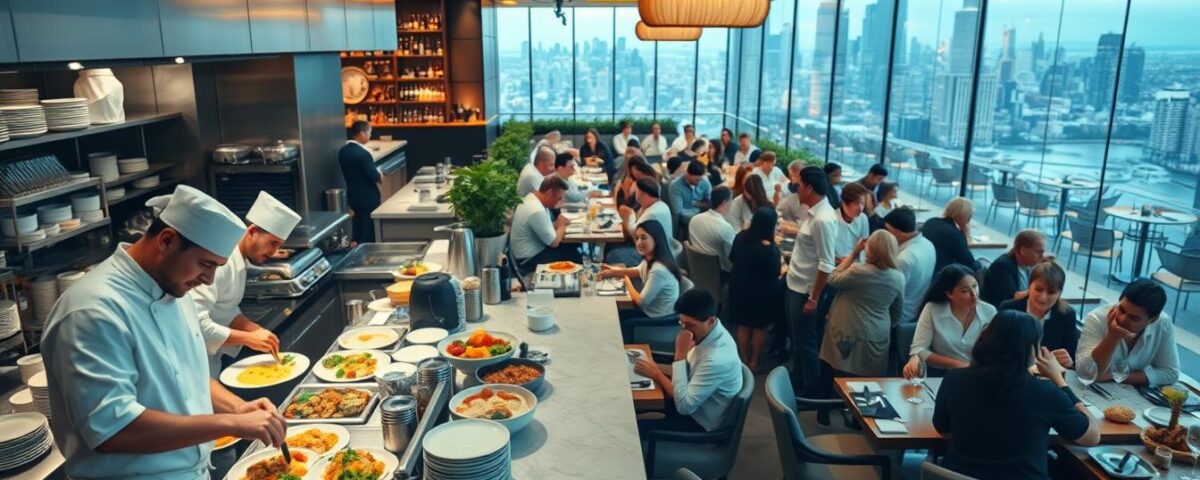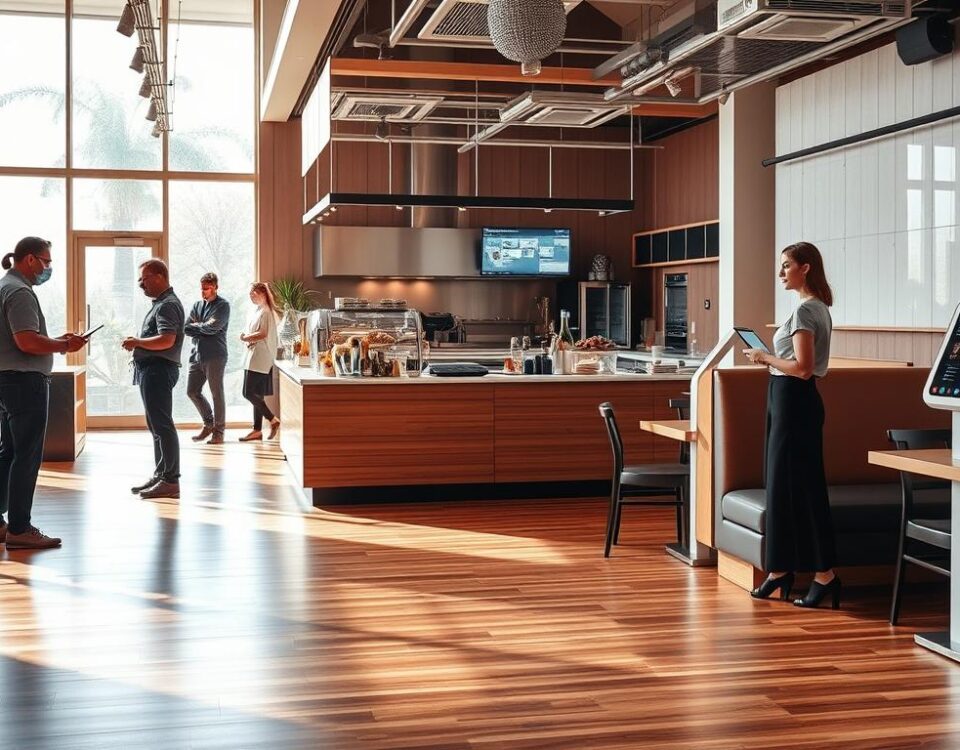
The Ultimate Guide to Modernizing Your Restaurant for Maximum Profit
October 10, 2025
Best Strategies to Boost Restaurant Sales During Slow Seasons
October 11, 2025As I reflect on the tumultuous years the restaurant industry has faced, from pandemic disruptions to supply chain issues and inflation, it’s clear that resilience has been key to survival. Yet, despite these challenges, 2025 is being hailed as “the year of hope” for restaurants, with significant growth projections and innovations on the horizon.
The global pandemic has reshaped consumer behavior, and the industry is poised for transformation. According to recent data, the restaurant industry is expected to see a resurgence, driven by evolving consumer preferences and technological advancements. The question on every restaurateur’s mind is: what’s next?
As we look ahead to 2025, eight major shifts are expected to shape the industry. These changes reflect broader economic and social patterns, offering insights into not just what’s changing, but why these shifts matter for your bottom line.
Key Takeaways
- The restaurant industry is poised for significant growth in 2025.
- Eight major shifts will shape the industry’s landscape.
- Evolving consumer preferences and technology will drive these changes.
- Understanding these trends is crucial for restaurateurs to stay ahead.
- 2025 is expected to be a transformative year for the industry.
The State of Restaurants in 2025
In 2025, the restaurant industry will continue its trajectory of growth and innovation. As consumers continue to prioritize dining out, the industry is expected to reach new heights.
Projected $1.5T in Sales and 200K New Jobs
The financial projections for the restaurant industry in 2025 are impressive, with sales expected to reach $1.5 trillion. This milestone signals strong consumer confidence despite economic uncertainties. The industry is also expected to create 200,000 new jobs, bringing total industry employment to 15.9 million. This growth will make restaurants a vital economic engine for communities nationwide.
| Category | 2025 Projections |
|---|---|
| Industry Sales | $1.5 Trillion |
| New Jobs | 200,000 |
| Total Employment | 15.9 Million |
From Uncertainty to Opportunity: The Year of Hope
As the industry transitions from a period of uncertainty to one of strategic opportunity, operators are leveraging lessons learned during challenging times to build more resilient business models. Consumer spending patterns show that most Americans would dine out more frequently if their budgets allowed, highlighting the enduring appeal of restaurant experiences. Rising costs continue to challenge operators, but innovative approaches to menu pricing, operational efficiency, and labor management are helping to offset these costs.
“The restaurant industry’s ability to adapt to changing consumer preferences and economic conditions will be crucial to its continued growth and success.”
By focusing on customer satisfaction and implementing effective business strategies, restaurants can thrive in 2025 and beyond.
Key Restaurant Industry Trends 2025
In 2025, the restaurant industry will witness a paradigm shift, driven by the integration of technology and a renewed focus on customer experience. As we navigate this new landscape, several key trends are emerging that will shape the future of the industry.
Shift1: Technology Revolution – AI and Automation
The technology revolution is transforming restaurant operations, with AI and automation at the forefront. Kitchen robotics are addressing labor shortages, while sophisticated AI systems optimize inventory management, personalize customer experiences, and predict dining trends with remarkable accuracy. For instance, AI-powered chatbots are being used to enhance customer service, providing 24/7 support and improving overall customer satisfaction.

Shift2: Experience Economy Trumps Price Sensitivity
The experience economy is reshaping consumer expectations, with a significant shift towards prioritizing the overall dining experience over price considerations. My research indicates that 64% of full-service customers and 47% of limited-service customers now prioritize the dining experience, forcing restaurants to rethink their value propositions. To cater to this trend, restaurants are focusing on creating unique and memorable experiences, such as themed dining events and interactive culinary experiences.
Shift3: Reimagining Recruitment and Workplace Culture
The restaurant industry is also witnessing a significant shift in recruitment strategies and workplace culture. With a growing emphasis on career development, work-life balance, and meaningful employee experiences, restaurants are moving beyond traditional hiring methods to attract and retain talent in a competitive market. This includes offering training programs, flexible scheduling, and employee recognition initiatives to foster a positive work environment.
Shift4: Balancing On-Premises and Off-Premises Business
The balancing act between on-premises and off-premises business models continues to evolve, with 90% of fine dining and 87% of casual dining operators focusing on rebuilding their dine-in business while maintaining delivery and takeout services. To achieve this balance, restaurants are investing in technology, such as online ordering systems and delivery management software, to streamline operations and enhance customer convenience.
| Trend | Description | Impact |
|---|---|---|
| Technology Revolution | Integration of AI and automation in restaurant operations | Improved efficiency, enhanced customer experience |
| Experience Economy | Prioritizing dining experience over price | Increased customer loyalty, revenue growth |
| Reimagining Recruitment | New strategies for attracting and retaining talent | Improved employee satisfaction, reduced turnover |
| Balancing Business Models | Rebuilding dine-in business while maintaining delivery and takeout services | Increased revenue, improved customer convenience |
These four shifts represent fundamental changes in how restaurants operate, market themselves, and deliver value to both customers and employees, requiring strategic adaptation rather than tactical responses from industry leaders.
Menu Innovation and Global Influences
As we look to the future, menu innovation and global influences are set to reshape the restaurant industry. The strategy of developing innovative new products based firmly on inherited cuisine traditions and standards is gaining traction across global markets at the chain level.
“Inherivation” – Reinventing Culinary Traditions
The trend of “inherivation” involves reinventing culinary traditions by reimagining inherited cuisine standards for contemporary palates. Examples include modern adaptations of traditional Korean mix coffee and reimagined Mexican classics like chiles en nogada. This approach allows restaurants to bring new and differentiated products to the mass market.
The Southeast Asian Expansion Wave
Restaurant chains from China, Japan, South Korea, the U.S., Australia, and the Middle East are eyeing Southeast Asia for expansion opportunities. Singapore is emerging as the primary entry point and testing ground for these chains as they face saturation and intense competition at home.
Escapist Dining Experiences and Themes
Restaurants are increasingly catering to consumers looking for reprieve from daily stresses. On menus, expressions of this trend may include new products that reference outer space, fantasy, and transportation to a far-off land, creating immersive themed environments.
Unexpected Food Pairings and Dessertified Snacks
Operators are introducing innovative offerings like loaded fries topped with ice cream, dumplings filled with chocolate sauce, or tteokbokki bathed in sweet sesame pastes. These unexpected food pairings and “dessertified” snacks are creating buzz and challenging conventional menu categories.
| Trend | Description | Examples |
|---|---|---|
| “Inherivation” | Reinventing culinary traditions | Modern Korean mix coffee, reimagined Mexican classics |
| Southeast Asian Expansion | Restaurant chains expanding into Southeast Asia | Chains from China, Japan, South Korea, the U.S., Australia, and the Middle East |
| Escapist Dining | Immersive themed environments | Space-themed menus, fantasy elements, nostalgic experiences |
| Unexpected Food Pairings | Innovative dessert-inspired snacks | Loaded fries with ice cream, chocolate-filled dumplings, sweet tteokbokki |
These menu innovations reflect broader consumer desires for novelty and experience while still honoring food traditions. Successful restaurants must navigate the delicate balance between comfort and adventure in their menu development.
Conclusion: Positioning Your Restaurant for Success in 2025
In 2025, restaurants will need to adapt to eight critical shifts to remain competitive. To stay ahead, it’s essential to be agile and responsive to changing consumer needs. My research highlights the importance of adaptability in driving growth and success in the restaurant industry. By understanding and implementing these trends, restaurants can capitalize on new opportunities and navigate ongoing challenges. As we move into the coming year, focusing on menu innovation and marketing strategies will be key to sustained growth.
FAQ
What are the key drivers of growth in the restaurant sector?
I believe the key drivers of growth will be technology adoption, innovative menu offerings, and a focus on creating unique dining experiences that attract a loyal customer base.
How will menu development change in the coming year?
In my view, menus will evolve to incorporate more global flavors and unexpected food pairings, as well as a trend towards dessertified snacks that blur the lines between sweet and savory.
What role will technology play in shaping the future of restaurants?
I think technology, particularly AI and automation, will continue to revolutionize the way restaurants operate, from streamlining back-of-house tasks to enhancing the customer experience through personalized service.
How can restaurants balance the needs of on-premises and off-premises customers?
To achieve this balance, I recommend that restaurants adopt a flexible business model that allows them to adapt to changing consumer preferences and off-premises demand.
What are some strategies for improving employee retention and recruitment?
In my opinion, creating a positive workplace culture that prioritizes employee well-being and provides opportunities for growth and development is crucial for attracting and retaining top talent.
How will consumer behavior influence the restaurant sector in the coming year?
I expect consumers to continue seeking out unique experiences and global influences in their dining choices, driving demand for restaurants that can deliver on these expectations.



